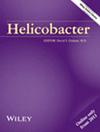Helicobacter pylori Pathogenic Factors and Their Interactions With the Gastric Microbiome
Abstract
Background
Variations in Helicobacter pylori infection rates and pathogenicity do not explain the global gastric cancer incidence, indicating that other bacteria may play a role. We investigated the pathogenic factors of H. pylori and their interactions with the gastric microbiome in a population with low gastric cancer but high gastritis rates in Indonesia.
Methods
The study included 66 H. pylori-positive gastric biopsies. DNA was extracted from the bacterial cultures to examine the pathogenic factors of H. pylori. The 16S rRNA V3–V4 region was sequenced using next-generation sequencing. The microbiome analysis concentrated on α-diversity and β-diversity, along with absolute and relative abundances. Correlation analysis and predicted functional inference were conducted using SECOM and PICRUSt2.
Results
Helicobacter predominates in H. pylori-infected stomachs, limiting other bacteria. Although α-diversity was non-significant, virulent H. pylori genotypes showed greater microbial diversity, suggesting co-colonization by other taxa. Some taxa were notably abundant across pathogenic subtypes (p < 0.05), such as Veillonella sp. in East Asian-type CagA H. pylori and Klebsiella without babB. The β-diversity results indicated that microbial diversity and abundance varied according to polymorphisms in patients with different H. pylori CagA types, sabA status, homA/B, and iceA subtypes (PERMANOVA test; p < 0.05). H. pylori dominance remains unchanged when atrophy worsens, alongside decreased microbial diversity (p < 0.05 for atrophy stage 0 vs. stages 1 and 2). Microbial correlation analysis revealed that Helicobacter only had a positive linear relationship with Veillonella (SECOM(Pearson2) = 0.51, SECOM(Distance) = 0.60), whereas Streptococcus sp. correlated with several gastric taxa. Predicted functional inference showed several pathways to be depleted when atrophy progresses.
Conclusion
Various pathogenic factors impact microbial diversity, and bacteria cohabiting in the gastric environment might shape disease outcomes. Additionally, our study uncovers relationships among genera present in the stomach. More research is needed to explore how non-Helicobacter species induce or possibly safeguard against gastric pathologies.

 求助内容:
求助内容: 应助结果提醒方式:
应助结果提醒方式:


